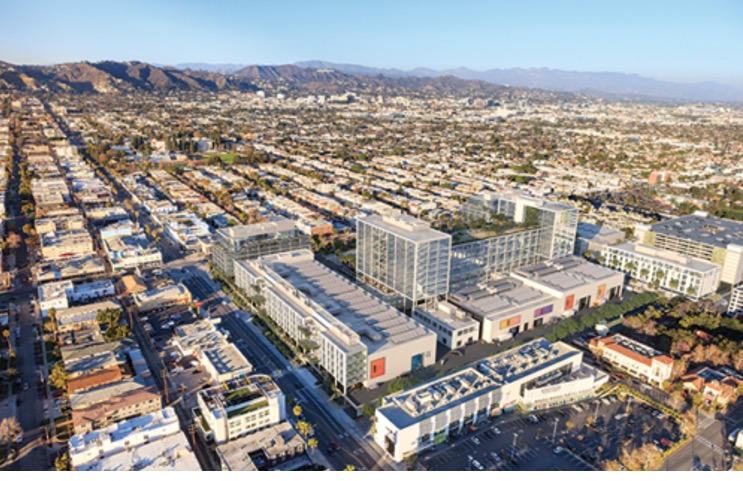CommentsPLANNING WATCH - The 21 year old Wilshire Community Plan is part of LA’s General Plan’s Land Use Element.
In the 17 years since former Director of Planning Gail Goldberg announced the “New Community Plans,” the City Council has only adopted 7 community Plans. Furthermore, these 7 are due for a second update because the City Council directed the Planning Department to renew LA’s Community Plans on a six year cycle. Another 17 community plans, mostly in the south Valley and west LA, are bogged down in an extended preparation process, with no announced adoption dates.
That leaves 14 plans, such as the crucial Wilshire Community Plan, already postponed for three years, without known start or adoption dates. Even if these plans begin their updates in 2023, at best the City Council would adopt them in 2026. Since Community Plan Updates require extensive community outreach, detailed research, Draft and Final Environmental Impact Reports, draft and final Community Plan texts, and detailed zoning ordinances, 2026 is a highly optimistic deadline.
During the next three years much can happen (e.g. permanent drought), and this is certainly the case the Wilshire Community Plan. Furthermore, given the enormous traffic congestion and homeless encampments in the Wilshire corridor, as well as McMansions, rundown sidewalks and streets, missing ADA curb cuts and street trees, and lack of bicycle and electric scooter infrastructure, local community groups are likely to legally challenge the completed Community Plan. These community groups know the day-to-day shortcomings of life in the plan area, and they fail to see how more McMansions, shopping centers, medical complexes, and luxury apartment buildings will improve their quality of life. After all, real estate speculation on steroids does not plant trees and drought-tolerant yards, build homeless housing, repair streets and sidewalks, replace dilapidated utility infrastructure, install bike and scooter lanes, subsidize roof top solar, and fund and build-out the proposed first-last mile right-of-way improvements for Wilshire Boulevard’s Purple Line Subway Extension.

Wilshire Community Plan map. Boundaries are Beverly Hills on the west, Hoover on the east, Venice on the south, and Rosewood and Melrose on the north.
There is a long list of projects in the enormous Wilshire Community Plan area shown above. But as long as this Community Plan is delayed, projects, like the enormous Hackman project at Beverly and Fairfax, face fewer barriers in City Hall’s complex permitting process.
A brief overview of projects already completed and those under review reveals the adverse consequences of further delaying the Wilshire Community Plan’s update.
Already completed in the western portion of the Wilshire Community Plan area:
- Grove Shopping Center
- Beverly Center Shopping Center
- Beverly Connection Shopping Center
- Cedar-Sinai Hospital Complex
- Farmers Market remodel
Underway:
- Purple Line Subway Extension
- Many high-rise luxury apartment towers in Koreatown and the Miracle Mile
- LACMA rebuild
- Cedar-Sinai Hospital expansion
Under review or shovel ready:
- Dozens of high-rise apartments on or near the Purple Line subway corridor
- Town and Country Complex at Third and Ogden
- Big 5 site medical building at Wilshire and San Vicente
- Hackman CBS-site project (2 million square feet constructed over two decades)
- Academy of Motion Picture Arts and Science Museum at Wilshire and Fairfax
- Caruso luxury high-rise at San Vicente and Burton Way
- 1050 South LaCienega high-rise at 1050 South LaCienega
- Mirabel luxury high-rise apartment tower (Wilshire and Cochran)
- Tar Pits revamp
- Wilshire Courtyard site (Wilshire and Curson)
- Crenshaw Line northern extension
If the Wilshire Community Plan were completed before, not after, these and dozens of other real estate projects obtained their permits, many projects would be sidelined. They would conflict with the adopted Wilshire Plan’s policies, plan designations, and zoning. In these cases, the plan’s research on local conditions would reveal that the area already has a massive amount of available, unused zoning. The plan’s research would reveal that the area’s large homeless population results from inflated rents, which would further increase when expensive apartment buildings open for business.
All of this was foreseen many years ago. In retirement, former Director of Planning Calvin Hamilton remarked that one of LA’s worst planning mistakes was to permit major construction of large shopping centers (Beverly Center, The Grove) and other major traffic generators (Cedar-Sinai Hospital) north of Wilshire Boulevard’s Miracle Mile corridor. As LA’s premier shopping, traffic, and transit corridor, it should have been the location of these and other major projects. Had his advice been followed, Angelenos would not be subject to the battle of the Titans, in which the Farmers Market and Grove Shopping Center, both massive traffic generators, are leading the opposition to the enormous Hackman project at the adjacent Beverly-Fairfax CBS/Television City site.
Good planning would have either prevented these and similar projects or directed scaled-down versions to Wilshire Boulevard’s Miracle Mile area. Unfortunately, in Los Angeles, rational planning is dwarfed by a “planning process” shaped by short-term real estate deals. While a few easy marks can be enticed to support these deals, these cheerleaders are part of the problem, not the solution. Meanwhile, the quality of life for the area’s residents will deteriorate further as these enormous planning mistake makes the area’s epic traffic congestion and homelessness worse.
(Dick Platkin is a former Los Angeles city planner who reports on local planning issues for CityWatchLA. He serves on the boards of United Neighborhoods for Los Angeles (UN4LA) and the Greater Fairfax Residents Association. Previous Planning Watch columns are available at the CityWatchLA archives. Please send comments and corrections to [email protected].)














